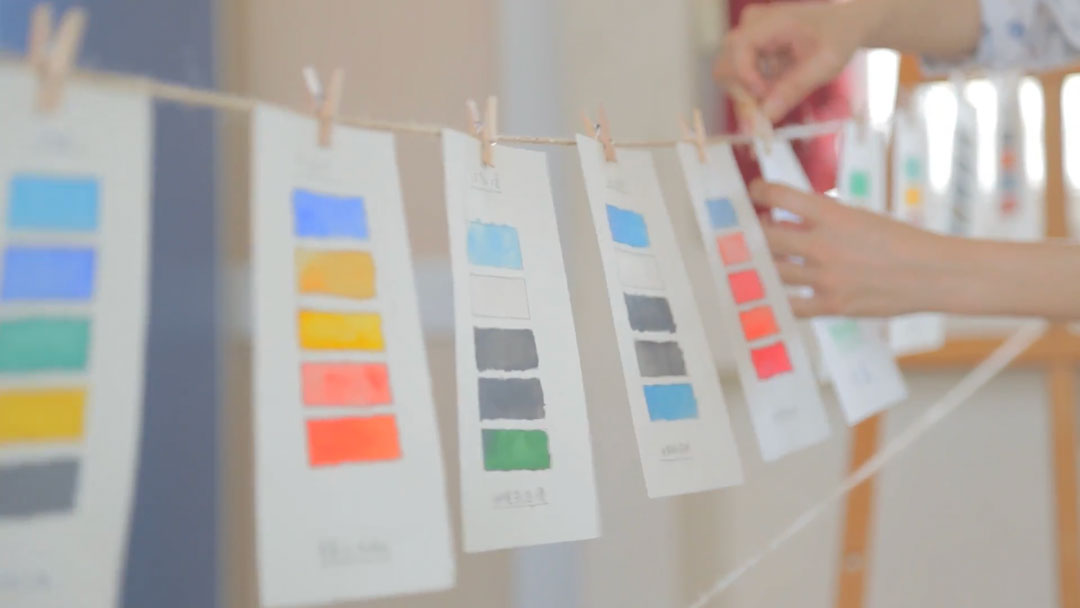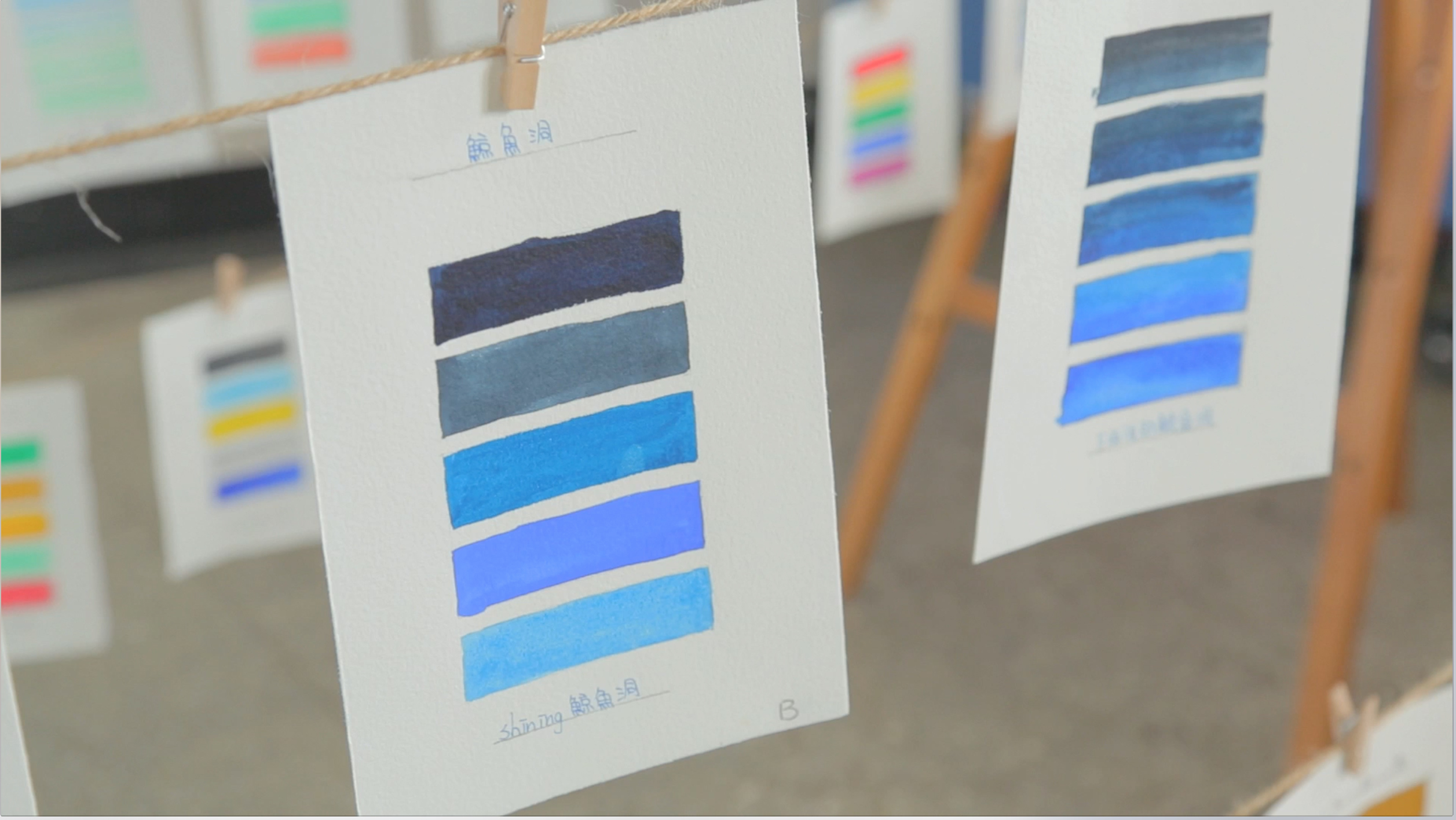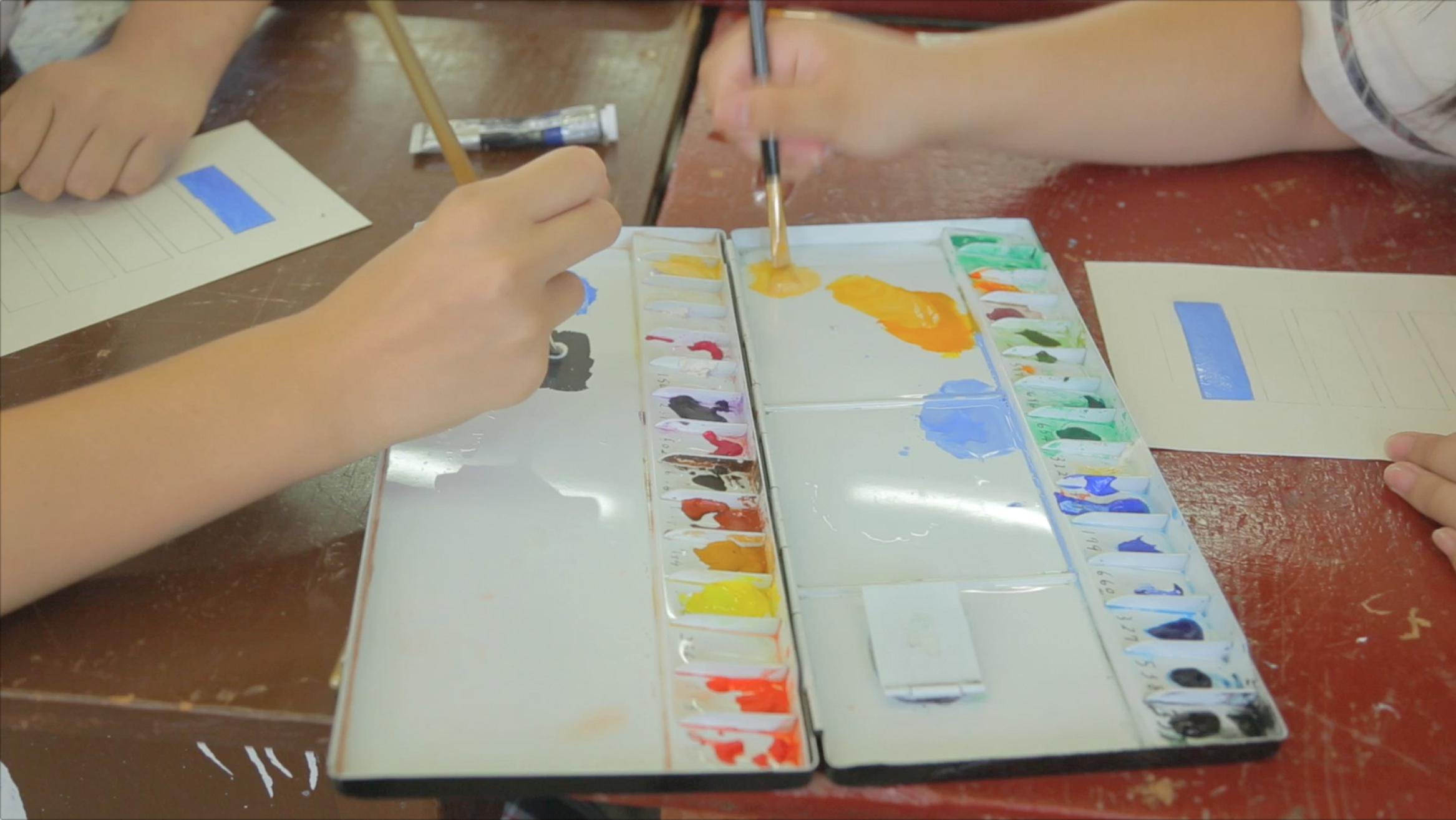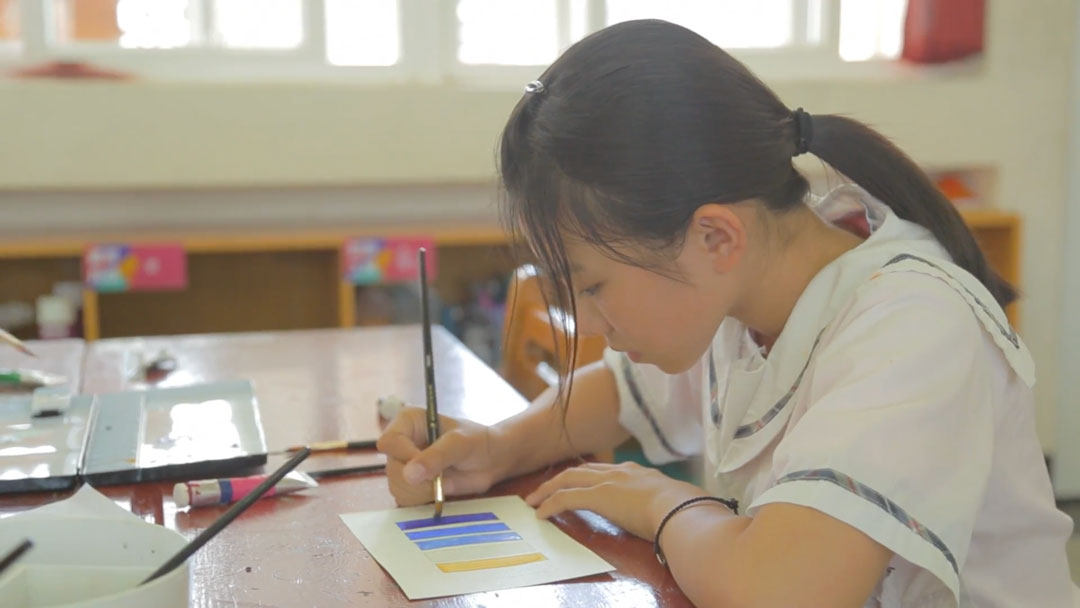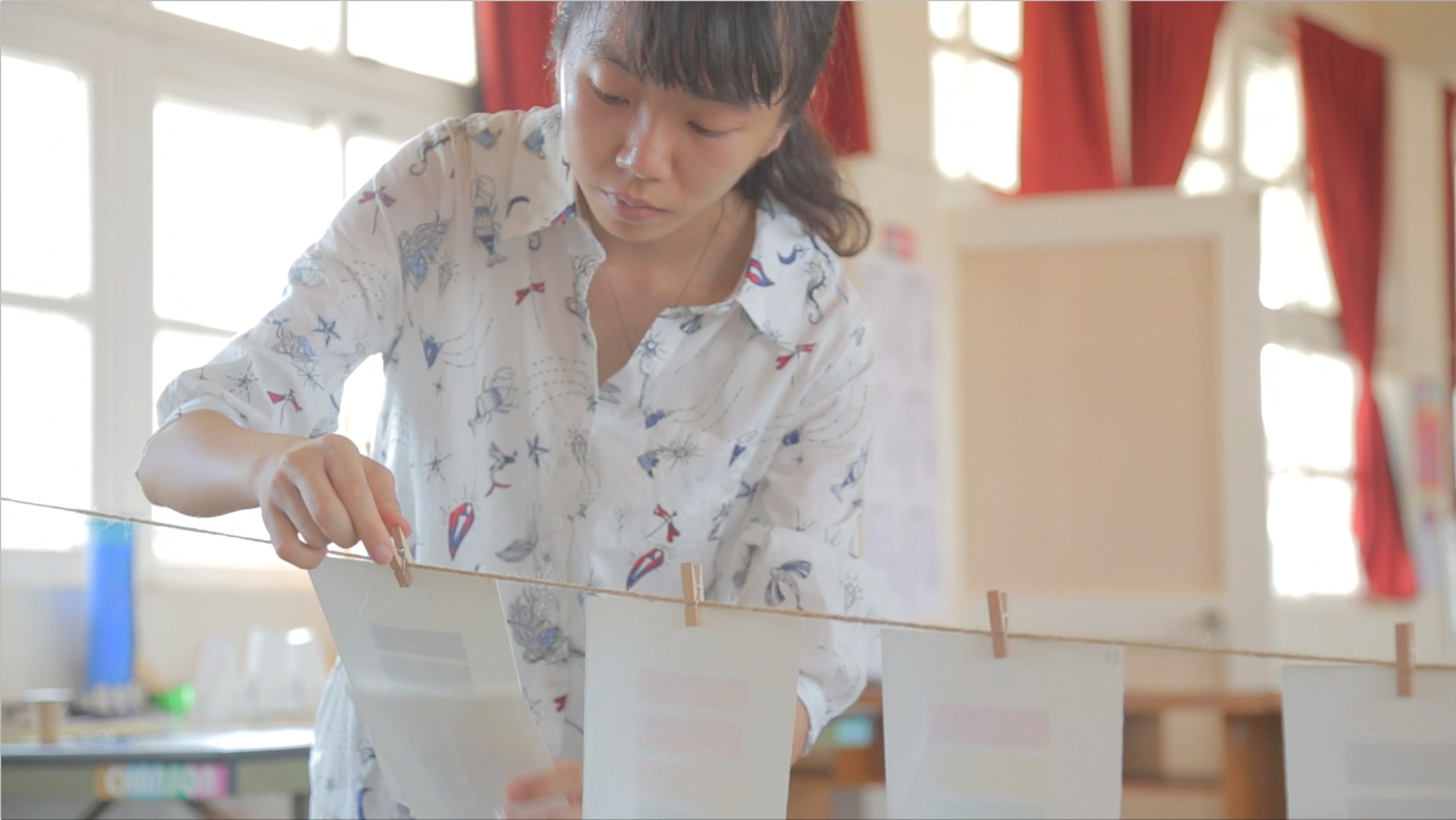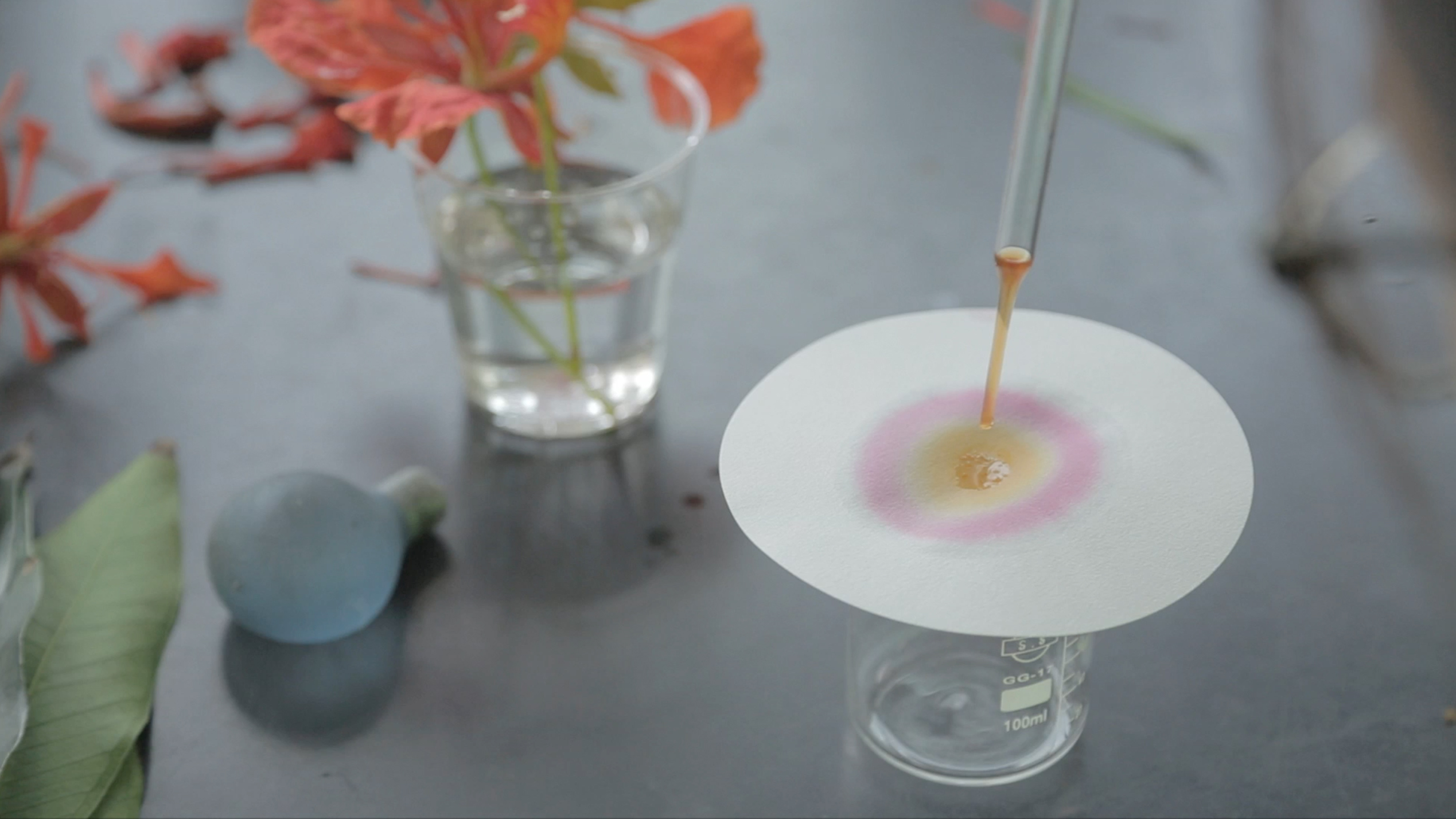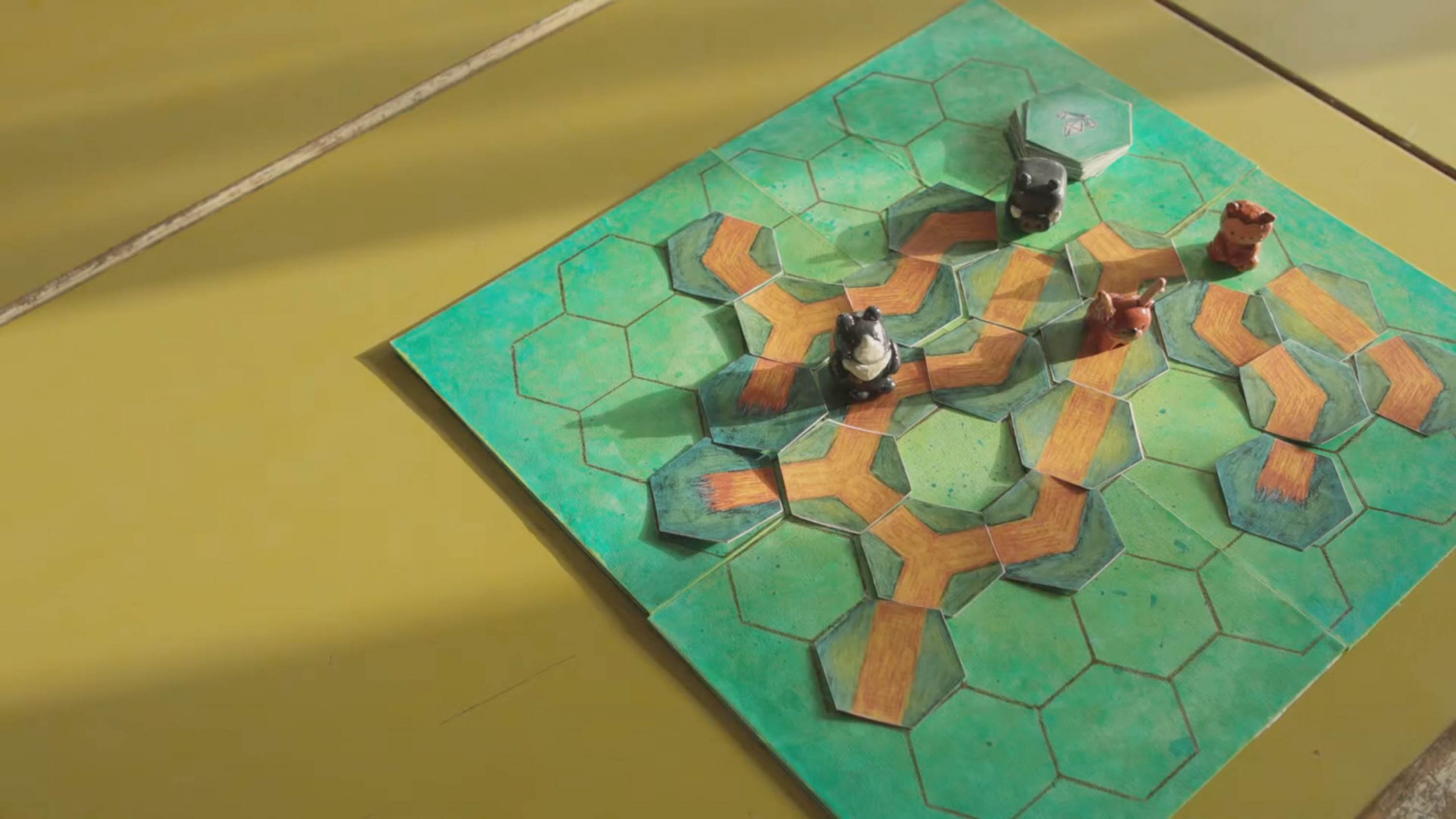If Memory Has Colors
Mrs. Lin had lectured at Hsiyu Junior High School for over a year. At first, the student showed less confidence in the art class because there hadn’t been a regular art teacher in the school, and they hadn’t received much art training before. But to her surprise, Mrs. Lin discovered the children, living on the Penghu island and endowed with great knowledge of oceans, were keen to distinguish the colors in their everyday scenery. By identifying the colors, mixing colors of paints, and relating the color to their personal memories, the students depicted the flexible sceneries and the poetic moments of this island. In the color charts they drew, the intimate bond between them and their hometown was also vividly shown. For the children who were about to leave the island, the lesson was a precious gift from Mrs. Lin, who was born in Penghu as well. She wished when they are apart, by reminiscing about the colors, they can remember their beautiful hometown.
